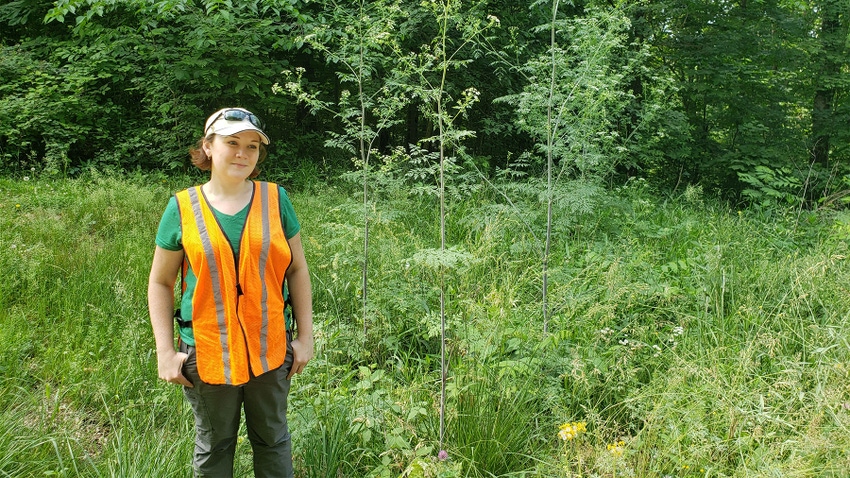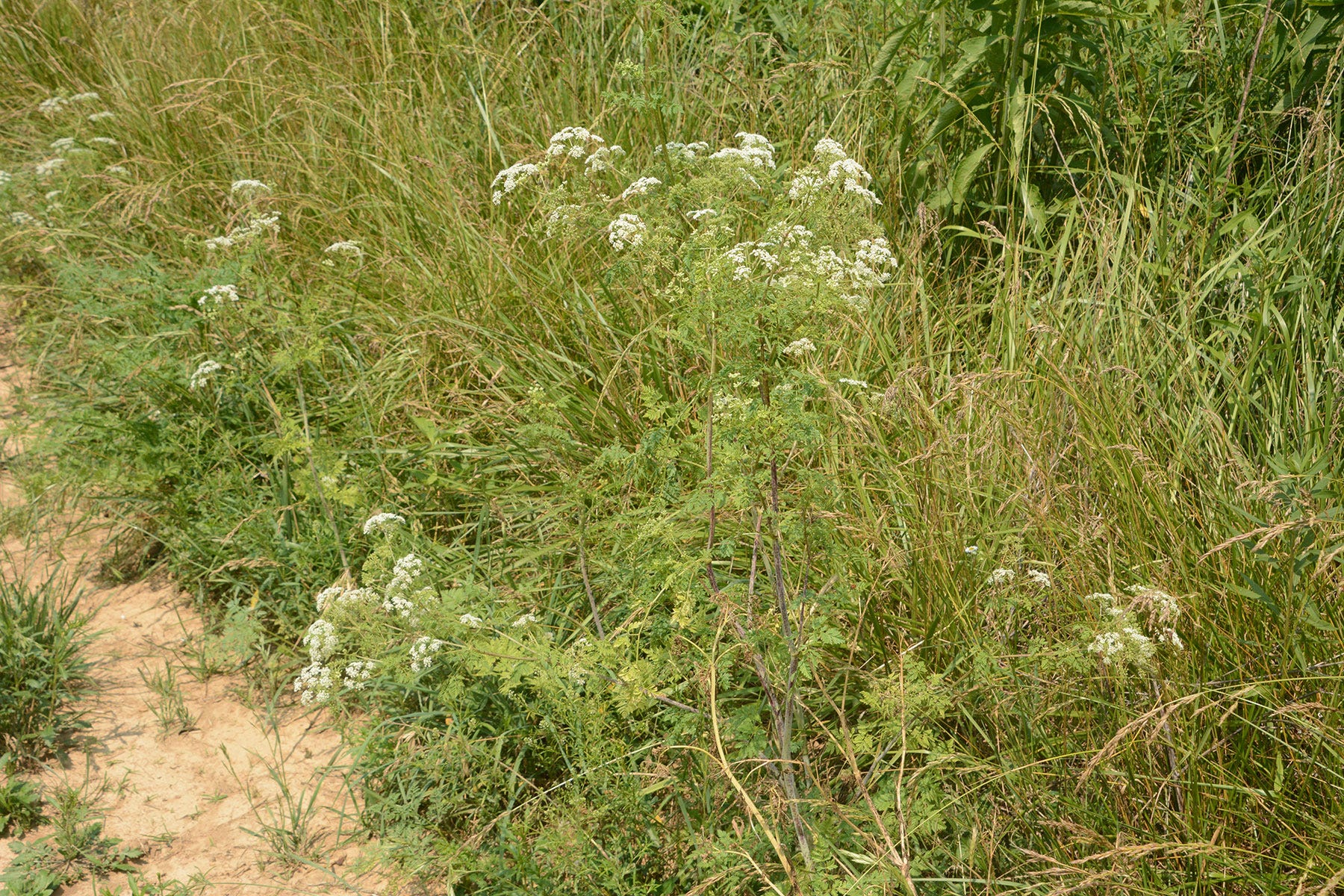
What frustrated Mike Ponsford most when I visited his farm near Salem, Ind., in June? It wasn’t dry weather or even how hot it was that day. Instead, it was the poison hemlock growing along lanes we traveled to reach different fields.
“I spray and fight it, but it’s very difficult to get ahead of it,” Ponsford said. “It seems like it’s an epidemic in this part of Indiana.”
No one disagrees. For his part, Bill Johnson, Purdue Extension weed control specialist, made sure control measures for poison hemlock were included in the 2024 Ohio, Indiana, Illinois and Missouri Weed Control Guide. Invasive species headaches aren’t limited to Indiana.
For non-crop and pasture areas like Ponsford’s, the specialists recommend herbicides containing triclopyr. Find it under various names, including Remedy, Ultra and Garlon, or mixed with 2,4-D as Crossbow. Other herbicides with substantial activity when applied at proper times include dicamba, sold as Clarity and under other names, Escort XP, Cimarron Max and Curtail. Follow label directions and restrictions.
Step up the fight
Ray Chattin, Vincennes, Ind., farmer, sawmill operator and Knox County Soil and Water Conservation District supporter, led a charge over the past decade to get others to recognize the threat posed by invasive species. Dozens of species can take over timberland quickly, choking out desirable growth. Due to his efforts, Knox County is a leader in instituting programs to raise awareness about invasive species and in implementing workdays to physically remove them.
Other counties, particularly in southern and central Indiana, have followed suit. Through Chattin’s efforts, the Southern Indiana Cooperative Invasives Management group formed, and Cooperative Invasive Species Management Areas sprung up in multiple counties. Indiana Natural Resources Conservation Service supports SICIM and CISMAs through cooperative agreements.

OUT OF CONTROL? Farmer Mike Ponsford continues to spray and attack invasive plants like poison hemlock, but he says it seems impossible to gain the upper hand. (Tom J. Bechman)
Chattin helped lead the push for increased funding for Clean Water Indiana in 2023, successfully securing the first substantial increase in state funding for conservation in Indiana in over 20 years. Some of that funding supports battling invasive species through Clean Water Indiana grants.
The Tri-County Invasive Species Specialist Project in Martin, Daviess and Orange counties is a good example. It was funded through the Indiana State Department of Agriculture by a Clean Water Indiana grant. Emily Finch will lead the fight against honeysuckle, autumn olive, poison hemlock and other invasives.
Finch did the same work in Martin, Daviess and Dubois counties under previous grants from 2019 through 2023. This time, Orange County will benefit from her expertise as well.
Commit all the way
Here’s the catch. While this newly funded effort is great, it isn’t permanent. It has an expiration date like the previous grants that funded Finch’s work. Chattin and others believe more full-time specialists are needed statewide, battling these silent enemies day in and day out.
Farmers like Mike Ponsford are more than willing to do their part. But they deserve support. They need people telling them what to try next when current efforts aren’t gaining the upper hand.
From what we saw from the seat of Ponsford’s UTV last summer, there is more work to be done. It will take commitment at the local, state and federal levels to assist landowners in taking back their land from invasive invaders.
Read more about:
Invasive SpeciesAbout the Author(s)
You May Also Like




